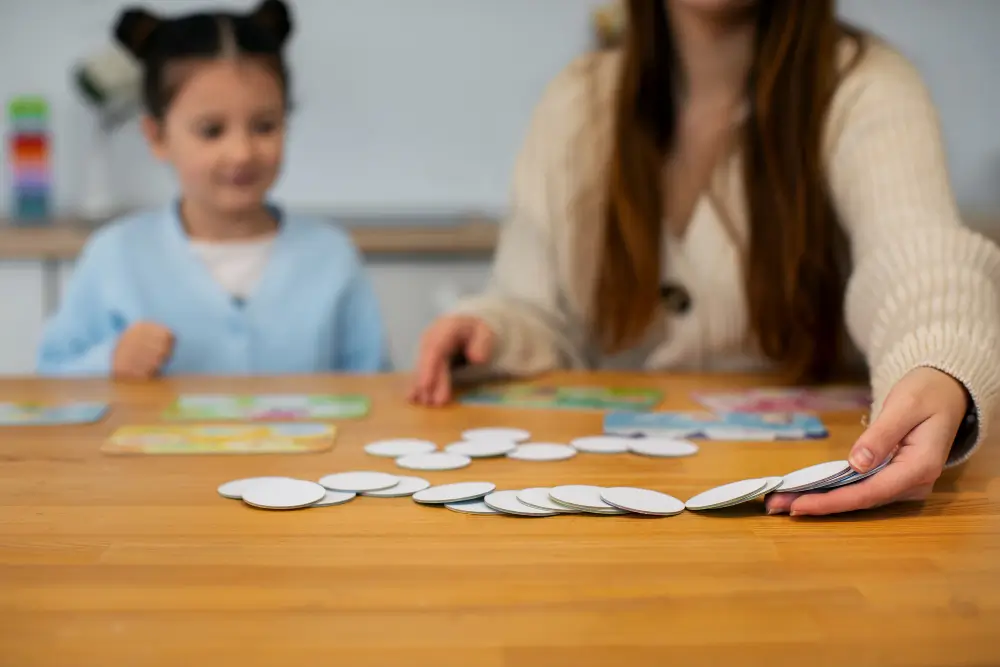What if the secret to helping students succeed in school wasn’t found in textbooks or test scores, but in something much more personalized? Occupational therapy is quietly changing the way students overcome obstacles, gain confidence, and engage in learning like never before. In Navigating School Life: How Occupational Therapy Empowers Students, we explore the strategies that make a lasting difference, often in the most unexpected ways.
Help your student thrive—Book occupational therapy services today! 📚🧠

Supporting Academic Achievement Through Skill Development
Occupational therapy strengthens academic performance by focusing on the development of essential skills that allow students to engage more fully in the school environment.
Through a personalized approach, occupational therapists identify and address barriers that impact learning, supporting academic performance as well as emotional and social well-being.
This therapy supports several key areas of child development. One central focus is building motor skills—both fine and gross—that are necessary for everyday tasks like writing, cutting, or moving safely around the classroom.
Sensory processing is also addressed, helping students manage stimuli like noise or light that may interfere with their ability to concentrate. This is done through personalized strategies and environmental adjustments.
The therapy also promotes cognitive skills such as memory, attention, and organization. In addition, it encourages social interaction by providing tools to improve communication, collaboration, and group participation.
As students learn to engage more independently and successfully, they often experience a boost in self-esteem and confidence, which enhances their motivation and willingness to face new challenges.
Skill development through occupational therapy not only improves academic performance, but also supports independence, motivation, and overall quality of life at school.
Enhancing Social Skills and Emotional Well-being in Students
Occupational therapy in school settings also focuses on the social and emotional development of students. With structured activities and targeted strategies, therapists help students form healthy relationships, regulate their emotions, and navigate social challenges in the school environment.
- Group activities and play: Role-playing, simulations, team games, and debates give students a safe space to practice collaboration, turn-taking, problem-solving, and empathy. These experiences help reinforce positive social behaviors.
- Communication skills development: Therapists guide students in building skills such as active listening, assertive expression, and the use of body language. Activities like guided dialogues, presentations, and group discussions provide structured opportunities to practice.
- Emotional regulation: Techniques like relaxation, meditation, and visualization give students tools to manage stress, frustration, and anxiety, helping them stay calm and focused in the classroom.
- Conflict resolution: Through activities such as mediation, negotiation, and assertive communication, students learn to identify the root of conflicts, understand others’ perspectives, and work toward peaceful solutions.
- Social support and connection: Activities that highlight teamwork, personal strengths, and collaboration contribute to a positive classroom environment and help students feel valued and supported.
Integrating occupational therapy to build social and emotional skills gives students a strong foundation for long-term personal, social, and academic growth.
Promoting Independence with Daily Living Activities
Occupational therapy supports students in becoming more independent with daily routines. By using therapeutic activities based on everyday tasks, therapy helps students build autonomy, prevent future challenges, and enhance their quality of life at school and beyond.
The process begins with a thorough assessment of each student’s individual needs. Therapists evaluate physical, cognitive, and social barriers that may affect the student’s ability to carry out essential tasks.
Based on this evaluation, a personalized intervention plan is developed. It may include activities such as practicing personal hygiene, learning to dress independently, or improving how the student navigates the classroom and other spaces.
Adaptation strategies and environmental modifications are used to support student performance. These can involve specific tools like adapted utensils or mobility aids, as well as physical changes such as ramps or support bars.
The goal is to enable students to perform their daily tasks more safely and effectively, building their sense of competence and control over their routines.
Therapists also teach practical strategies that can be applied at home, in school, or in the community, encouraging active participation in all areas of life.
Facilitating Inclusive Education and Participation for All Students
Occupational therapy helps shape inclusive learning environments by ensuring all students—especially those with special needs—can participate in school activities. Close collaboration with educators allows for the adaptation of both physical spaces and teaching practices to create equitable access to learning.
Working together helps teachers understand the specific needs of each student and apply inclusive strategies in the classroom. Adjusting room layouts, using appropriate furniture, and designing adapted activities make it easier for all students to engage. Students are encouraged to take an active role in their learning, building autonomy, confidence, and a strong sense of belonging.
Occupational therapy supports the success of inclusive education by fostering teamwork between professionals, families, and students. This shared commitment to inclusion helps create a respectful and supportive school community where every child feels valued and has the opportunity to reach their full potential.
Sources:
- Davis, J. (2008). Occupational therapy students’ metaphors for helping. The American Journal of Occupational Therapy, 62(2), 242-250.
- Jagiela, M. (2024). The Integration of Occupational Therapy in Transition Programs to Improve Outcomes for Students.
